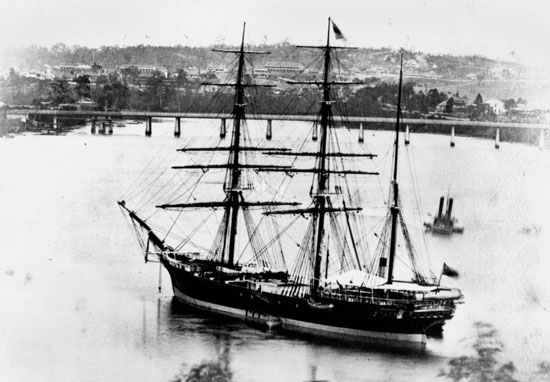Lost Buddhist treasures of Mullaitivu wreck: Few answers still
In the history of nineteenth century voyages, one of the most invaluable cargoes to go missing comprised a cache of rare, ancient Buddhist sculptures, gold coins, statues and photographs of Indian archaeological sites.
The cargo was on board the SS Indus, the P&0 (Peninsula & Orient Company) steam vessel that was wrecked off the rugged eastern coastline in proximity to Mullaitivu on November 8,1885.
In the next few days there were detailed reports of this tragic incident at sea in the Times of Ceylon and the Ceylon Observer, at a time when communication between Mullaitivu and Colombo was almost non-existent. The sinking of the SS Indus was widely reported in the Times of Ceylon of November 12,13,15 and17 and on December 1, 1885. It was also reported in the Ceylon Observer of November 14, 1885.

Questions unanswered: The SS Indus
The 360-foot SS Indus considered as one of the best sailing vessels owned by the P&0, was built in England in 1871 by a British firm William Denny & Brothers. For more than a decade, it played a significant role in British trade and communication both in the near and far East. In April 1881, the SS Indus was docked in the port of London when the marine census took place.
When the P&O was awarded a government mail contract to deliver the post to Egypt, India and the rest of Asia, the SS Indus was among the first vessels to carry mail along the trans-Indian ocean route. The ship was manned by a large crew and as many as 17 of the crew were Goan. The ship was fitted to carry a passenger load of 129 first class passengers and 50 in second class.
It was less than half full at the time of the accident. It had 40 persons on board of which eight were first class passengers. Fortunately, there was no loss of life as all the passengers and crew were safely rescued, permitted to carry only a small amount of their personal baggage when leaving the vessel.
The ship had docked in Kolkatta (Calcutta) India on October 15 and later embarked on its return voyage to England via Colombo and Mumbai (Bombay) on November 2, 1885. But the vessel never got beyond Sri Lanka.
When it sank in deep waters, most of the cargo in the hold was not salvaged. The salvaging was hampered by bad weather and the wreck was too deep for divers.
The SS Indus was carrying a large consignment of tea and about 200 chests of indigo, as well as the valuable lifetime collection of personal items belonging to Sir Alexander Cunningham (1814-1893), the first Director-General of Archaeological Survey of India who had just retired in September 1885.
His collection of valuable artifacts to be shipped to England included artifacts from the excavation of the ancient Buddhist site of Bhahrut in North India which supposedly included relic caskets, sculptures and other related items. These were destined to the British Museum in London.
Among the consignment were items of great personal and historic value much of it collected during his travels in Northern India, present-day Pakistan and Afghanistan.
Bhahrut’s link with the early history of Buddhism is undeniably important with its unique Buddhist stupa built around 250 BC. It is known among Indian historians for each of the panels on the base were explicitly inscribed in Brahmini characters stating what each panel depicted. Cunningham visited the site in 1873 and conducted an archaeological dig there in 1874.
During the early phase of archaeological exploration under the British, there existed an unusual arrangement under which the Director was entitled to a share of the excavated items and could retain some of the artefacts unearthed. It was only in 1871, a few years after Cunningham was appointed as Director General that this unusual procedure was prohibited by a new regulation that came into force. Cunningham had amassed a lifetime’s collection of gold coins, seals, statuary, stone implements, and above all valuable photographs of various sites.
So what happened to the Bhahrut sculptures? In a letter Cunningham wrote in August 13, 1886, to Gertrude Murray Thompson (guardians of Cunningham’s grandchildren), he gave a description of part of the salvaged material that was delivered to him. He had received 18 boxes from the wreck of the SS Indus and virtually all his photographs (except a portrait of his wife), slightly damaged books and other damaged items. But of the sculptures he noted “Some half a dozen contained sculptures and old stones. The sculptures are apparently uninjured and the ancient stone implements are good as new.”
Had he been referring to the items that he had excavated from Bhahrut and part of the cargo he sent to England on the SS Indus?
In the 1960s, the Archaeological Commissioner of Ceylon, Charles E. Godakumbura in the annual report noted that attempts had been made by Arthur C. Clarke who led an underwater expedition to recover some of the valuable objects lost with the sinking of the SS Indus. In 1964, in his account he reported that it was not worth investing in further undersea exploration and it was likely the valuables had been already recovered.
In 2013, a report by the leader of the team S.M. Nandadasa of the Maritime Archeological Unit of the Central Cultural Fund (CCF) who had conducted a dive and survey of the area revealed very little new information. This writer’s inquiries from amateur deep sea divers who have made attempts on shipwrecks off the coast added no new information.
| Cunningham in India | |
| Alexander Cunningham arrived in India aged 19, enlisted in the army and served in several military campaigns in remote parts of the country. During his early years, Cunningham was stationed in Kolkatta and appointed ADC to Lord Auckland, the Governor General in 1836. He then was to encounter the great intellectual and scholar of Indian history, James Prinsep. This four-year interlude gave Cunningham a fantastic opportunity to spend much time with Prinsep and their close friendship laid the foundation of Cunningham’s life and shaped his future as a fervent archaeologist. When in 1838, Prinsep suddenly left for England due to a serious illness, Cunningham stayed on in Kolkatta, but his time there was also cut short when he was transferred to a new military outpost. By September 1839, Cunningham had the opportunity of visiting Kashmir and its ancient sites and had amassed a huge collection of rare ancient coins dating back to the medieval times. By 1839 he married Alicia Maria Whish and planned to have a family. But sadly, only a few of his children would live beyond their infancy and his wife died aged just 31. Cunningham put his whole mind to every activity he was called to carry out –as engineer, surveyor, military officer, or civil administrative officer. Often he was posted to remote almost inaccessible corners of India such as the valleys of Kangra and Kulu, the frontiers of Ladakh and Tibet. By 1848 Cunningham was an active member of the Archaeological Society of Delhi and undertook the restoration of the ruins of Delhi after the Great Indian Rebellion of 1858. |
Searching for an ideal partner? Find your soul mate on Hitad.lk, Sri Lanka's favourite marriage proposals page. With Hitad.lk matrimonial advertisements you have access to thousands of ads from potential suitors who are looking for someone just like you.


